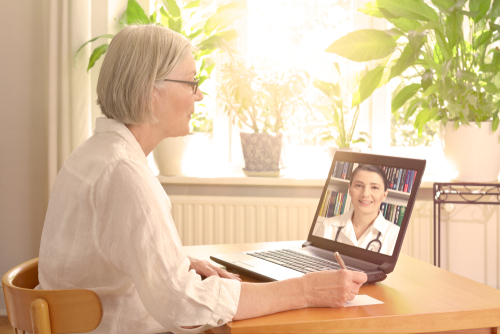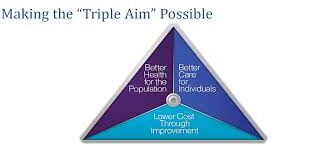It is safe to say that the world has been shrunken by the power of the internet. With Artificial Intelligence – becoming less artificial and more intelligent – things we couldn’t imagine in our wildest dreams are becoming a part of our daily lives.
Think about it- your smartphone knows the number of steps you walk, the speed at which you walk, your heart rate, and much more. It can sense it all. Internet and Artificial Intelligence has served us with a world of exciting possibilities. Physical presence is taking a back seat, and we are furiously moving towards – ‘all things digital’.
AI startups face a lot of challenges to grow, still one of the most crucial aspects of our life that digitalization has recently touched is – healthcare. Innovation has no limits, and innovative healthcare methodologies are sure to change the dynamics of healthcare. We are already leveraging the internet to make healthcare more accessible.
We call it Telehealth. There’s so much happening around it. At its core, telehealth is all about being able to take care of your health without having to physically visit a doctor.
Telehealth is basically- “the use of electronic information and telecommunications technologies to support healthcare delivery, health education, public health, and health administration.”
It consists of various branches such as – Tele-nutrition, Telenursing, Tele-pharmacy, Tele-rehabilitation, to name a few.
Here’s what Telehealth looks like:
- Live interaction – Telehealth allows real-time interaction between the patient and the caregiver. It has been used for management, diagnosis, counseling, and monitoring of patients.
- Store and forward – Here, the relevant data of the patient is stored, and then forwarded to a practitioner for assessment. In such cases, the physical presence of the practitioner and the patient is not required.
- Remote Patient Monitoring – Remote monitoring allows the practitioner to monitor the patient remotely. This can prove to be highly effective in cases where the patient is suffering from chronic diseases such as heart disease, diabetes mellitus, or asthma.
- Mobile health – Believe it or not, your smartphone can be your life-savior. Through mobile health, you get to access healthcare information on your smartphone.
Telehealth is already doing a lot. Imagine to what lengths it can go if it’s combined with Artificial Intelligence.
To know that let’s have an overview of what Artificial Intelligence is
Artificial intelligence is nothing but human-like intelligence possessed by machines. That means, giving machines the ability to think and react like humans. We use AI in our day to day lives.
It’s AI that’s telling you ‘the nearest ice-cream parlors’ or your ‘recommended Netflix shows’. AI is already everywhere. The best part? We are using it day in and day out without even realizing it.
AI is going to invade most of the aspects of our lives. And healthcare will not remain untouched.
AI and Healthcare
Healthcare, as of now, faces a demand vs supply issue. There are more patients than there are practitioners. This leads to a gap wherein the patients do not receive the required healthcare facilities. And the surging costs worsen the scenario.
The two major problems are:
- To locate the patient, the practitioner, and all the associated data – at the same place – at the same time.
- Providing specialized expertise as soon as the clinical demand arises.
A system that would allow the patients to receive the necessary care from the comfort of their homes, and that too at the correct time, thereby cutting-down cost and avoiding unnecessary hassle, is what healthcare is looking forward to.
Here’s how combining AI and Telehealth can help
- Combating the demand vs supply issue – In telehealth, Information and Communication Technology (ICT) tools can be used to assess the demand-supply gap of healthcare services. And AI could save time by making an intelligent analysis. It can match the practitioners and the patients according to the skillset, that is – it can bring together the practitioners with specific skills and the patients who need those skills.
- Seamless communication – More often than not it is difficult for patients and practitioners or all the entire team of practitioners, to be physically present at the same place. This calls for remote care. AI can help in such cases by creating an intelligent communication environment wherein the practitioners could not only interact but also maintain a detailed virtual knowledge base of the patient’s condition and management, in real-time.
- Analyzing the available data- Medical diagnosis has become highly evidence-based. AI can help to store and analyze this evidence. A serious disease is often an outcome of many ignored symptoms. AI can analyze large data sets to diagnose a potential disease. Also, by asking the right questions AI can save a lot of time. In the presence of a local nurse, the patient can himself identify the disease by answering these questions.
- Improvement in evaluation – In recent times, the overall healthcare data including the digital data generated by regular people through the use of electronic health record systems has gone up exponentially. This large data set can be efficiently analyzed by AI giving rise to new inferences and actionable insights that will lead to better clinical diagnosis. All this combined can take the quality of healthcare to a whole new level.
- Early detection – AI can detect the symptoms that may often go unnoticed by the patients. Diseases such as cancer can be detected in their early stages. This can lead to increased chances of recovery. According to the American Cancer Society, a high proportion of mammograms yield false results, leading to 1 in 2 healthy women being told they have cancer. The use of AI is to enable review and translation of mammograms 30 times faster with 99% accuracy thereby reducing the need for unnecessary biopsies. Also, consumer wearables and other medical devices are at an all-time high. Combined with AI, it can help to detect early-stage heart disease. This will result in better monitoring, thereby helping to make diseases more treatable.
- 24*7*365 availability – AI can prove to be highly beneficial for people who are looking for more education and support related to healthcare. A practitioner cannot be present 24*7 to guide the person. However, AI can do that. It can be used to send reminders for medication, nutrition, exercise, etc., It can also be used to answer general health queries and provide a bunch of information.
- Remote patient monitoring – This is, by far, the most innovative aspect of AI and telehealth. Telehealth can transmit the data from the patient to the practitioner and also describe the state of the patient utilizing the information from electronic health records. AI, in such cases, can outperform humans. It can incorporate and co-ordinate data from additional tools like location finders (GPS), accelerometers, motion sensors, gyroscopes, etc. in real-time. It is a complex process and not possible for humans without education and training.
Conclusion
With all these possibilities, the combination of telehealth and Artificial Intelligence is sure to take healthcare to a whole new level. We can not only expect the cure for diseases but also their prevention. This will surely lead to a better tomorrow where we will experience enhanced life-quality and improved facilities.
Also, the aim should be to make healthcare more inclusive and let it spread to the remotest corners of the world.








